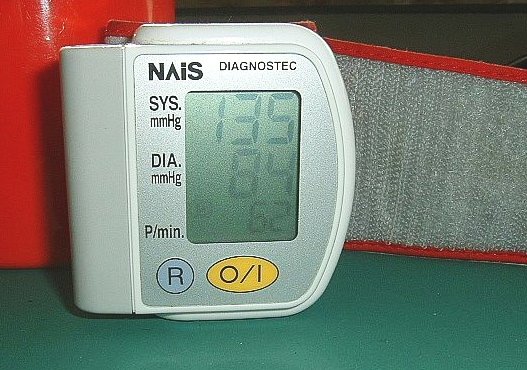Performance of health personnel in the prevention of arterial hypertension
Hypertension (hypertension) is the most frequent chronic disease in the world and that contributes most to mortality, focusing on the importance of prevention and the role of health professionals, especially medical and nursing staff.
The real cost of arterial hypertension is complex since in the case of a risk factor for other diseases, its calculation would imply estimating the costs associated with each of them, in addition to having to calculate the additional impact of the disease as a result of the days of low, the reduction in work efficiency and lost years of productivity, since a high proportion of patients with high blood pressure are of working age.
Thus, the purpose of the action of health professionals is to provide guidance for the organization of activities of control of hypertension that is adaptable to the conditions of the community under study with specific reference in the management of the lifestyles of the people affected, and that can be applied in general health services, whatever their level of specialization, but emphasizing primary health care programs. Therefore the present investigation will take as a reference Research articles referring to educational intervention techniques on healthy lifestyles taking advantage of the experiences acquired in the collaborative study to facilitate the care of hypertensive patients in general health services, also facilitating the operation of hypertension control activities in different levels of care, in order to achieve a good coverage of the programs, without undermining the quality of care, identifying risk factors, diagnostic techniques, classification and treatment of arterial hypertension to achieve the unification of medical criteria.
Age, sex, skin color, inheritance, sodium-rich diets, trace elements, sociocultural factors, alcoholism, smoking, hyperlipidemia and diseases such as ischemic heart disease, vascular brain disease, and diabetes mellitus.
In such a way that commenting on the reasons of race, more in the black; sex, more in men; inheritance, more in relatives with a first degree relationship; diet, obesity and average sodium intake, made the latter, controversial in recent months; Environmental, stress, as well as anxious and depressive personality, have been proven in multiple epidemiological studies.
In this order of ideas, the lifestyle is conceptualized as the individual way of life, that is, the way of life of people.
Thus, certain lifestyle changes have been shown to be effective in lowering blood pressure and should be part of the therapeutic approach of hypertensive people, on the other hand weight loss in obese people, increased exercise Aerobic fitness (walking fast at least 30 minutes a day most days of the week) and decreasing alcohol consumption in people who drink excessive amounts have been shown to be effective in reducing blood pressure.

Public Domain Image

Arterial hypertension is a chronic condition of varied etiology and is characterized by the sustained increase in blood pressure, either diastolic systolic or both. According to Harrison (2013), in 90% of cases the cause is unknown, which is why it has been called essential arterial hypertension, with a strong hereditary influence, in 5 to 10% of cases there is a cause directly responsible for the elevation of blood pressure levels and this form of hypertension is called secondary arterial hypertension. High blood pressure is caused by a narrowing of very small arteries called arterioles that regulate blood flow in the body. As these arterioles narrow (or contract), the heart has to work harder to pump blood through a smaller space, and the pressure inside the blood vessels increases.
Arterial hypertension currently represents a notable public health problem worldwide, not only because of its health significance but also because of its social importance, which affects more than a quarter of the adult population. (2011) WHO estimates that by 2020, 25% more years of healthy life will be lost worldwide due to cardiovascular disease, but another 50% to 60% would enjoy better health if their blood pressure were more low

Cardiovascular morbidity and mortality increase as systolic pressure increases as diastolic blood pressure increases, but in individuals over 50, systolic pressure and pulse pressure are better predictors of complications than diastolic pressure.
Blood pressure should be measured with a well-calibrated sphygmomanometer using a cuff of appropriate size, according to Mcphee (2014) after the patient rests comfortably, with the back resting on the back of the chair or in recumbency, for at least 5 minutes and after at least 30 minutes of having smoked or ingested coffee.
Given that blood pressure readings in many individuals are very variable - especially in the office - the diagnosis of hypertension should be made only until after noticing an average elevation in two or more readings in two or more office visits, unless the readings are very high or are accompanied by other indicators such as diabetes mellitus, chronic kidney disease, heart failure, post-myocardial infarction, cerebral vascular event and high risk of coronary heart disease.

In hypertensive patients, the primary purpose of treatment is to achieve the greatest reduction in long-term total CV risk, maintaining a good quality of life, this requires treatment of high blood pressure values, as well as all risk factors. Reversible associates to reduce the associated CV risk, thus, any reduction in blood pressure, although not optimal, helps reduce the total risk, however, blood pressure should be lowered to at least 140/90 mmHg (systolic / diastolic), and even lower figures according to tolerance, in all hypertensive patients.
The target blood pressure should be at least <130/80 mmHg in patients with diabetes and in patients with high or very high risk, such as what they have associated clinical conditions.
Among the measures that the doctor must implement in every patient with HAS are:
Weight control: It is suggested to take the patient to a body mass index less than 30. It is shown that for every 10 kg of weight reduction, the systolic pressure figures are reduced from 5 to 20 mm / Hg.
The diet rich in fruits and vegetables and with low saturated fat can affect a reduction in systolic figures up to 8 mm / Hg.
The low-salt diet with 2 g of sodium per day may decrease systolic figures from 8 to 10 mm / Hg.
Aerobic physical activity for 30 continuous minutes at least 4 times a week helps to control the weight and can decrease the TA figures by 4 to 9 mm / Hg in addition to offering a lot of known benefits.
The reduction in alcohol consumption is of great importance in the hypertensive patient. Patients who significantly reduce their consumption may decrease their systolic numbers from 4 to 6 mm / Hg.


The level of knowledge of hypertensive patients about the concept of high blood pressure, risk factors, measures to reduce high blood pressure and avoid complications inherent to the underlying disease were inadequate, which is perceived as a consequence of the curative clinical activity on the preventive one, reflected in the lack of strategies for the promotion and prevention of cardiovascular diseases based on the control of arterial hypertension, in such a way that it is essential to adapt care plans
Educational activities related to healthy lifestyles in patients with arterial hypertension, it is concluded that, despite the planning and execution of educational activities, in the end they are practiced in partial daily life, by the population under study, due to high cost of food, constant exposure to stressful situations, as well as the low interest of family and medical personnel in strengthening the knowledge acquired about healthy habits, which has a significant impact on the control and prevention of hypertension arterial. However, patients' concern is considerable when they realize the lack of orientation to which they are appropriate, so they expressed their need and interest in the existence of primary care plans and prevention strategies aimed at continuously educating and permanent high-risk groups as well as the population in general verifying an enthusiastic trend that allowed to associate the present proposal with future plans that can fill this educational gap by medical staff towards the comprehensive care of patients in order to improve Your quality of life.
Coordinate the applicability of strategies to guide patients in making healthy habits that allow controlling the incidence of high blood pressure.
Long-term follow-up of patients diagnosed as hypertensive should be carried out, with a low level of knowledge about healthy lifestyles, which allow demonstrating the effectiveness of the educational intervention, not only in the perception and acceptance of chronic disease, for the change in lifestyles, but also in the comparison of blood pressure values before and after the intervention.

Public Domain Image
He wrote for you @felixrodriguez

Education for the prevention of arterial hypertension
This post has been voted on by the SteemSTEM curation team and voting trail. It is elligible for support from @curie and @minnowbooster.
If you appreciate the work we are doing, then consider supporting our witness @stem.witness. Additional witness support to the curie witness would be appreciated as well.
For additional information please join us on the SteemSTEM discord and to get to know the rest of the community!
Thanks for having used the steemstem.io app and included @steemstem in the list of beneficiaries of this post. This granted you a stronger support from SteemSTEM.
Thanks
Electronic-terrorism, voice to skull and neuro monitoring on Hive and Steem. You can ignore this, but your going to wish you didnt soon. This is happening whether you believe it or not. https://ecency.com/fyrstikken/@fairandbalanced/i-am-the-only-motherfucker-on-the-internet-pointing-to-a-direct-source-for-voice-to-skull-electronic-terrorism